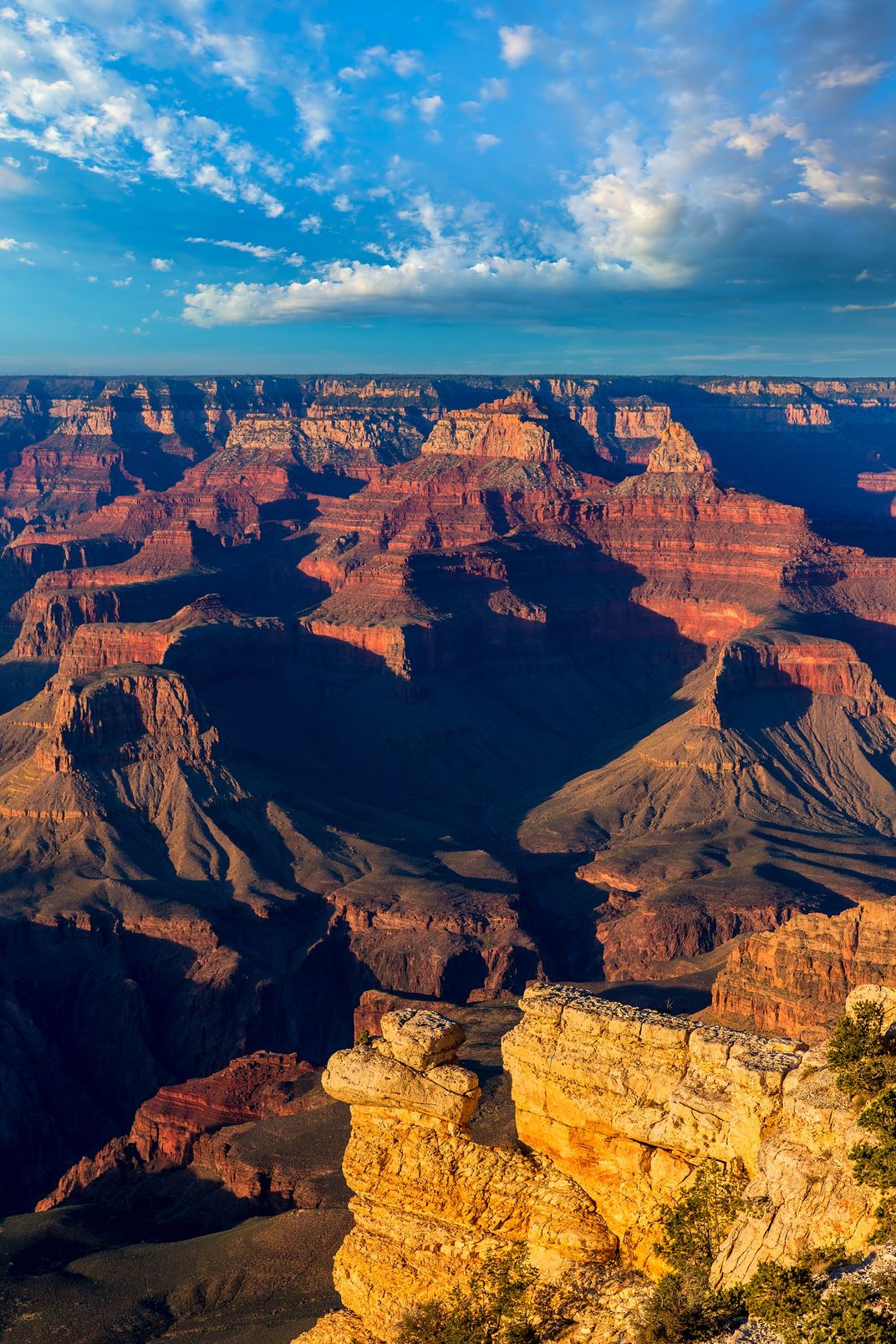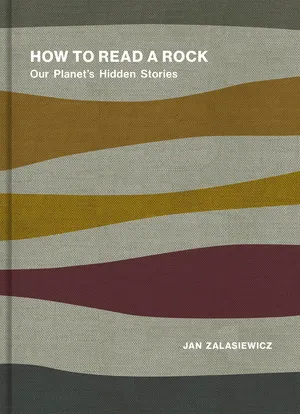Rocks Are Earth’s Greatest Storytellers
Learn about how Earth’s history is written in its rocks with this excerpt from “How to Read a Rock”
:focal(800x533:801x534)/https://tf-cmsv2-smithsonianmag-media.s3.amazonaws.com/filer_public/db/e8/dbe816c5-75ed-48dd-a7be-aea2890e970d/smithsonian_voices_cover.jpg)
© clkraus
Our planet is nearly 8,078 miles across. It has a thin skin of water, in oceans, lakes and rivers, and an even thinner living skin of soil and vegetation, with an atmosphere above. But Earth is nearly all rock, from which the water, air, soil and life have all emerged, and on which they are utterly dependent. Rocks are the foundation of our lives.
As a child I knew none of this, but I found rocks endlessly fascinating. They seemed like a gateway to worlds beyond even the fevered imaginations of Hollywood scriptwriters. Scrabbling around in stream beds, I could unearth mysterious mineral patterns and the petrified remains of animals and plants that died millions of years ago, which brought with them a host of puzzles and enigmas. I was captivated then and, after a career among rocks, I am still captivated by their infinite variety and richness.
Rocks tell stories of past worlds. They tell of landscapes and seascapes inhabited by dinosaurs and giant marine reptiles, by trilobites and corals – even the endless microbial layers of primeval Earth.
But these stories can stretch much further. Using clues gleaned from the rocks, we can evoke the speed and strength of currents that flowed in vanished rivers and long-dried seas; recreate the forces unleashed within a speeding avalanche or a meteorite strike; follow the path of white-hot magma through Earth; or simply peer several kilometers underground to where, for millions of years, subterranean fluids have trickled past and, with infinite slowness, deposited tiny mineral gardens in the spaces between sand grains. The stories held within rocks have no end. You can discover them and read them for yourself, given a little time, a sense of curiosity and a yen to puzzle through the many clues on those rocky surfaces.
Today, we live in a golden age of rock – far more so than did our Stone Age ancestors. They lived in a world clothed in forest and grasslands, and the rock they used was hewn from poorly lit caves or dangerous crags. Now, we can travel easily across open landscapes, to appreciate more easily the nature of their rocky skeletons. Strolling through towns and cities, we are surrounded by rock slabs decorating buildings and walkways – often neatly cut and polished to more easily see their intricacies. Even the pebbles in our driveways contain small marvels of Earth history. It is a rocky cornucopia.
We now also make rocks on a gargantuan scale, as concrete, brick, ceramics and other newly minted concoctions, rapidly transforming Earth’s surface. Familiar to the point of invisibility to us, these invented rocks are nevertheless an extraordinary development in planetary history. And our imaginations fly yet further, aboard the cameras and sensors of the spacecraft now exploring the solar system, getting close-up views of rocks on planets and moons beyond Earth (while the first glimpses of rocks in other star systems are appearing, too).

Simply put, a rock is made of one or more minerals, a mineral being a specific solid chemical compound. This is a very broad definition, one that widens the scope of the subject – and this book – from some of the common understandings of the word "rock." Rocks are commonly thought of as hard, as in the way that people might say something is "rock-hard." But there is a complete gradation between, say, the loose grains of sand on a beach and an extremely tough ancient sandstone that can only be broken up with a very large and vigorously applied hammer. Old rocks are not necessarily harder, either: you can crumble some ancient sandstones between your fingers, while modern beach sands can be naturally cemented very quickly to become hard "beach rock," which these days can enclose things like discarded drinks bottles and crisp packets as newly made ‘technofossils’. And so, in reading rocks, the best and deepest narratives are found by looking both at ancient sandstones and at the sands on today’s beaches and in today’s rivers, puzzling out how they relate to each other. They are all part of the same grand story.
Making these kinds of links is the key to understanding our past. We try to work out what kind of histories may be gleaned from rocks by studying their modern equivalents. These include beach and river sands, and also events such as volcanic eruptions and the lavas and ashes they erupt, to help understand ancient volcanic rocks. At the same time observing modern animals and plants and the ecosystems they form helps us understand the fossils we find in rocks. Indeed, most of what we consider to be the geography and biology of Earth has relevance to the interpretation of rocks (while their chemistry and physics may be studied as well). Understanding rocks—or trying to—is very much a holistic exercise.

Of course, rocks are shaped in many environments that are inaccessible to us. The inside of a magma chamber, or the throat of an erupting volcano, or the roots of a mountain belt 20 or more kilometers below ground, are not places we can visit or even get near to, even with modern technology. So, here we can turn that classic phrase upside down, which states that preserved remains of the pastare guides to what is happening at present, far beneath our feet or in perilously inaccessible places. Much of what we know about modern magma chambers, or exactly what happens during volcanic eruptions or deep within mountain belts, is based on the evidence or rocks now at the surface, which can be more easily and safely observed, sampled and analyzed. They are the witnesses to otherwise unknowable events and processes on Earth: witnesses we can see and interrogate.
Such rocks therefore act as a bridge in understanding things on Earth that are hidden from us. They are also a catalyst to further enquiry, to further explorations. For example, most sedimentary rocks on Earth were formed at the bottom of the sea. This is an environment that we land-living humans cannot easily visit, but the search for modern representatives of ancient marine strata has led scientists to explore the sea floor, by aqualung and diving suit in shallow water, and in armour-clad bathyscaphes in the deep, dark abyssal waters of the ocean floor. Scientists have gone to even greater lengths to create extreme conditions where rocks are formed: in specially built furnaces they study how rocks melt and magma crystallizes, and with tiny but powerful anvils, they recreate the crushing pressures where minerals like diamond form, hundreds of kilometers below ground. We can make use of the fruits of these studies in reading the rocks of our landscapes, to help us form pictures of the kind of landscapes—and "submarine scapes" and "deep Earth scapes"—they represent.
Rocks can help us peer into the future of our planet, too, as yet another, contemporary reworking of that classic phrase is "the past is the key to the future." Particularly, as we are collectively shaping the geological future – not least by making an increasingly wide range of synthetic rocks and minerals.
Earth is immensely old – modern calculations suggest a little over 4.5 billion years old – but how do we know this? It’s not a straightforward question, and took a long time to answer. The evidence had always lain concealed in the rocks of Earth, but revealing it took a long time and much effort.
The first inklings that Earth had its own planetary history that was far longer than human history began to emerge some three centuries ago, when the "savants" of those days began to investigate the rockstrata around them, as part of the general beginnings of modern science. They recognized that these rocks could contain the fossilized remains of animals and plants that did not resemble any species known to be alive at the time. This in itself was not a straightforward discovery, as much of the world was still poorly explored, and it could not immediately be ruled out that some of these fossilized organisms were not still living in a remote part of the globe. As the world’s lands became better known, such survival appeared increasingly unlikely (although a few "living fossils" were eventually found). Slowly, it was generally accepted that whole dynasties of prehistoric, long-vanished animals and plants existed long before humans appeared on Earth.
How long was that history? The approach to this question in the 19th century could not be answered directly: at that time, there was no way of dating rocks and fossils directly, in numbers of years. Some ingenious attempts were made – calculating how long it would take for the ocean to become salty, for example – but these were so flawed as to be of little use (salt in the oceans, for instance, can be removed from the sea as salt strata, as well as washed in by rivers, and so the sea’s saltiness cannot be used as a measuring stick for prehistoric time). So the question was generally approached by asking: "How many dynasties of prehistoric animals and plants were there?" This question could be answered practically and effectively – but only after a very great deal of work by many people. Once geology was established as a science, one of the first tasks undertaken by early geologists was to systematically hammer through Earth’s strata, in part for resources such as coal and iron ore, and in part to collect and catalogue the fossil plants and animals they contained.
This was an enormous task, not least because Earth’s rock strata have often been crumpled and dislocated by tectonic movements, and in many places they are more or less covered by soil and vegetation that make the tracing of their different layers a most challenging task. There are places, though, where the strata appear as a neat and clearly visible layer cake – as with the Grand Canyon, for instance. From such outcrops, one of the crucial principles in interpreting rocks was worked out long ago: that older rock strata are overlain by younger ones, representing layers of sediment that have successively buried each other. Called the "principle of superposition," it remains fundamental to working out Earth history from rocks.
However, even such seemingly straightforward successions of strata as at the Grand Canyon often include huge time gaps, so that the history they contain is very fragmentary, like a book with most of the pages torn out. Those missing pages will be present somewhere else in the world, but finding them, and putting Earth’s total history into proper order, is a gigantic jigsaw puzzle – one that continues, as our planet’s history is enormous and infinitely intricate.

How to Read a Rock: Our Planet's Hidden Stories is available from Smithsonian Books. Visit Smithsonian Books’ website to learn more about its publications and a full list of titles.
Excerpt from How to Read a Rock: Our Planet's Hidden Stories © 2022 by UniPress

